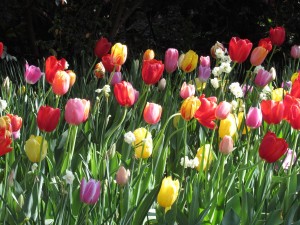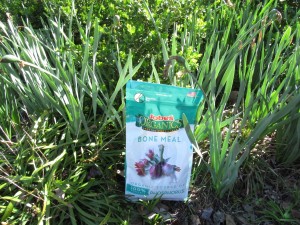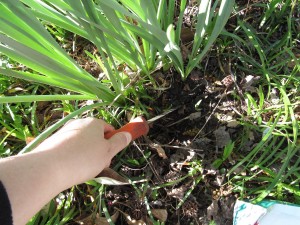Straightforward strategies to Fertilize Spring-Blooming Bulbs
Spring bulbs resembling daffodils, crocus, grape hyacinth, and tulips are in full bloom from March by way of May (counting on the place you reside). Most likely probably the most important care time for bulbs is appropriate after they finish flowering, so profit from the present, and get your geese in a row to supply these vegetation a leg up on the next season.
Main Flowering Bulb Care Strategies
Always depart the foliage (leaves) standing until it completely turns brown or yellow.
Whereas it is probably not in all probability probably the most beautiful issue to take a look at, the bulb should replenish its meals retailers so that it could nicely bloom as soon as extra, and the leaves are an integral part of that course of. They photosynthesize, altering light vitality and water into sugars that could be saved inside the plant. Within the occasion that they’re not allowed to do this (because you cut back the leaves off), they acquired’t produce big blooms the following yr. (They will not produce any blooms!)
Plant late-emerging perennials spherical bulbs to cowl the foliage.
While you truly don’t want to try nothing nevertheless dying bulb foliage whereas vegetation are on the decline, you can embody them with perennials that emerge properly after the bulbs. Hostas are an excellent occasion of this. They start peeking up out of the underside correct throughout the time that bulb foliage is wanting pretty ragged, and might draw the eye elsewhere—previous the dying bulb leaves.
Fertilize perennial bulbs (bulbs that come once more yr after yr) with Jobe’s Organics bone meal when the vegetation finish blooming.
Most people assume that fertilizer provides the meals (or vitality) vegetation need to have the ability to develop. That is not exactly true. Crops photosynthesize to make their very personal meals for vitality—that’s why it is essential to depart the leaves standing—nevertheless fertilizers do current important nutritional vitamins for vegetation that vegetation use to develop, transport water and sugars, produce flowers, and so forth. If I eat a banana, I get vitality and nutritional vitamins. There are sugars inside the banana that give me vitality, and there is moreover potassium, a nutrient, which performs a job in muscle contraction in my physique.
That banana is from a plant. The plant did the exhausting work of synthesizing the vitality and nutritional vitamins into one neat bundle. Everyone knows the place the vitality comes from—photosynthesis inside the plant that produces sugars. The nutritional vitamins—the potassium—are taken up by the plant from the soil, and that’s the place fertilizers can be found in. Fertilizers, resembling Jobe’s Organics bone meal, have nutritional vitamins that the vegetation cannot make themselves, nevertheless need to have the ability to develop.

Tulips are pretty, nevertheless they don’t perennialize properly, in order that they don’t have to be fed inside the spring after blooming.
Do not fertilize annual spring-flowering bulbs.
There are some annual summer-flowering bulbs which is likely to be worth fertilizing, caring for, digging up, overwintering in a storage, and re-planting in spring. Cannas, elephant ears, and caladium (when you have got a selected, hard-to-find type of caladium), are among the many many bulbs worth babying and carrying over to the following summer time season. Hybrid tulips, what you take into account when you assume “tulips” truly aren’t. They hardly positioned on the an identical sturdy current for a second, third, or fourth yr, even do you have to fertilize them. The exception to the rule are species tulips, which do perennialize. Fertilize them after the top blooming.
Straightforward strategies to Fertilize Bulbs with Jobe’s Organics Bone Meal

It’s time to fertilize spring-blooming bulbs when the flowers have accomplished nevertheless the inexperienced leaves keep.
Fertilizing your bulbs with Jobe’s Organics bone meal is simple!
- Seize a measuring spoon. It might be an on a regular basis teaspoon that you just’d use for consuming (nevertheless wash it sooner than you eat with it!) or a measuring spoon used for cooking. Use a spoon that may help you study to use the proper amount of product. (Merely be set off it’s pure doesn’t suggest you’ll want to merely dump the bag on a plant!)
- Sprinkle the bone meal inside the soil throughout the plant. Don’t throw it on the plant.
- Scratch the bone meal into the soil throughout the plant. Don’t dig intently. Merely scratch adequate so that the particles are making contact with the soil. You aren’t truly feeding the vegetation, you’re feeding the soil organisms. They’re going to break down the bone meal into components that the vegetation can take up by way of their roots.

4.Water the place you fertilized to help start the nutrient breakdown course of inside the soil. This moreover ensures that ought to you acquired just a few of the bone meal on the vegetation, it is washed off, and acquired’t burn the vegetation.
5. Measure the Jobe’s Pure bone meal fertilizer when making use of it to the yard to make sure you don’t over-feed.
6.Use a soil knife, small trowel, or hand rake to scratch the bone meal into the soil.

Katie Elzer-Peters gardens inside the coastal metropolis of Wilmington, North Carolina. She grows greens and has in depth mixed border gardens all by way of her half acre property. She has a Bachelor of Science in Public Horticulture from Purdue School and a Grasp of Science in Public Horticulture from the School of Delaware and the Longwood Graduate Program. Katie has written eight books about gardening for Cool Springs Press.






